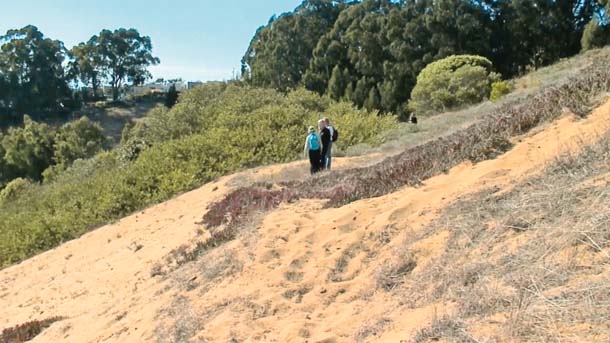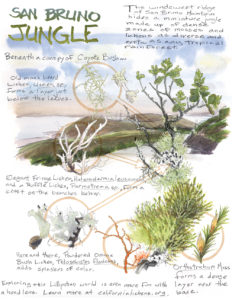In the ongoing debate over just how many hills there are in San Francisco – anywhere from seven to 70 – you are unlikely to hear it argued that San Bruno Mountain in South San Francisco should be included in the mix. This iconic peak is technically in San Mateo County and often feels worlds away from the city. But when you stand atop the ancient sand dunes on the mountain’s northwestern flank, it’s easy to see that this was once part of the vast San Francisco dune system that spread from Land’s End to San Bruno Mountain. And that’s why San Bruno Mountain Watch is fighting to protect this small back-dune remnant.
The Daly City Dunes, adjacent to San Bruno Mountain State and County Park and above Hillside Park, belong to an ancient dune system that formed during an interglacial period at least 100,000 years ago. These weathered and yellowed Pleistocene dunes stand in contrast to the younger, white-sand dunes in the Presidio and along the Great Highway that formed atop the older dunes around 10,000 years ago.
The older dunes are more efficient at retaining water and nutrients. These dunes also support rare and endangered plants such as San Francisco spineflower, silver beach lupine, and the endangered San Francisco lessingia. “Lessingia is more than a cute yellow flower,” says Joe Cannon, stewardship director at San Bruno Mountain Watch. “It provides food for pollinators all summer long until the rain starts.” Unlike most annuals, lessingia lives for a full year. It thrives on open dunes, starting in spring as a basal rosette and pumping all its energy into a deep taproot. In June it bolts into flower — little yellow blossoms that live all summer.
San Bruno Mountain Watch, a grassroots nonprofit that has worked to preserve and expand the native ecosystems of the mountain for 40 years, wants to see the dunes protected and connected to the parklands on San Bruno Mountain. Most of the Daly City Dunes are publicly owned, explains Cannon, but about four acres are in private hands, and one of the owners wants to cap the dunes with eight houses and accompanying infrastructure.
“This dune site has a long-term future,” says Cannon, “because it is connected to wilderness and already part of a system” – the rest of San Bruno Mountain.




-300x221.jpg)
-300x179.jpg)